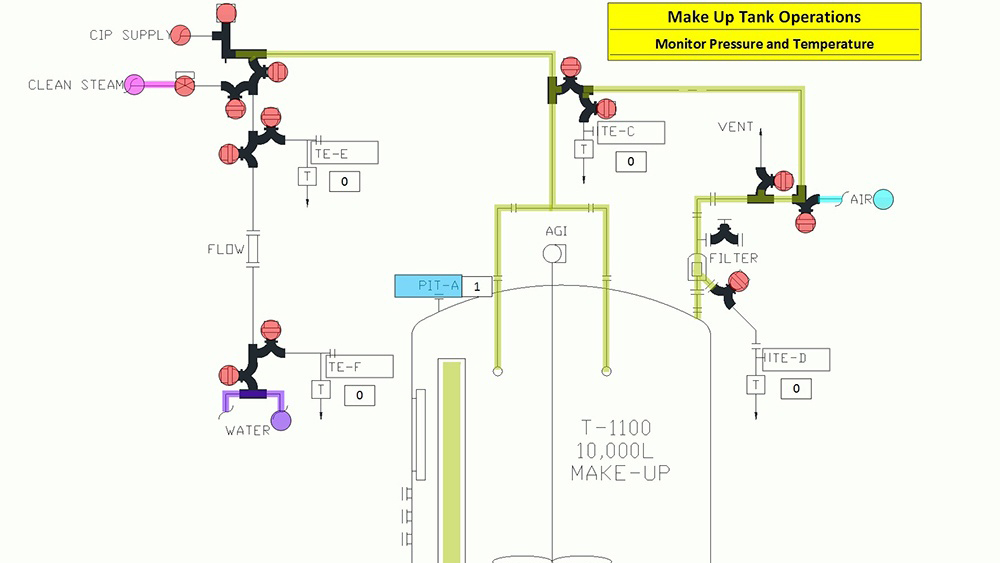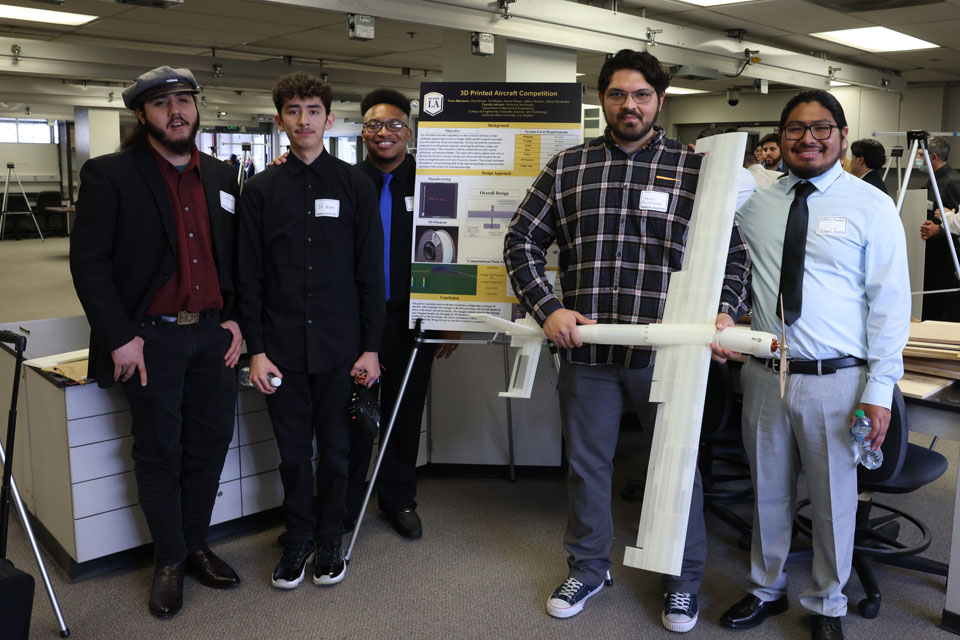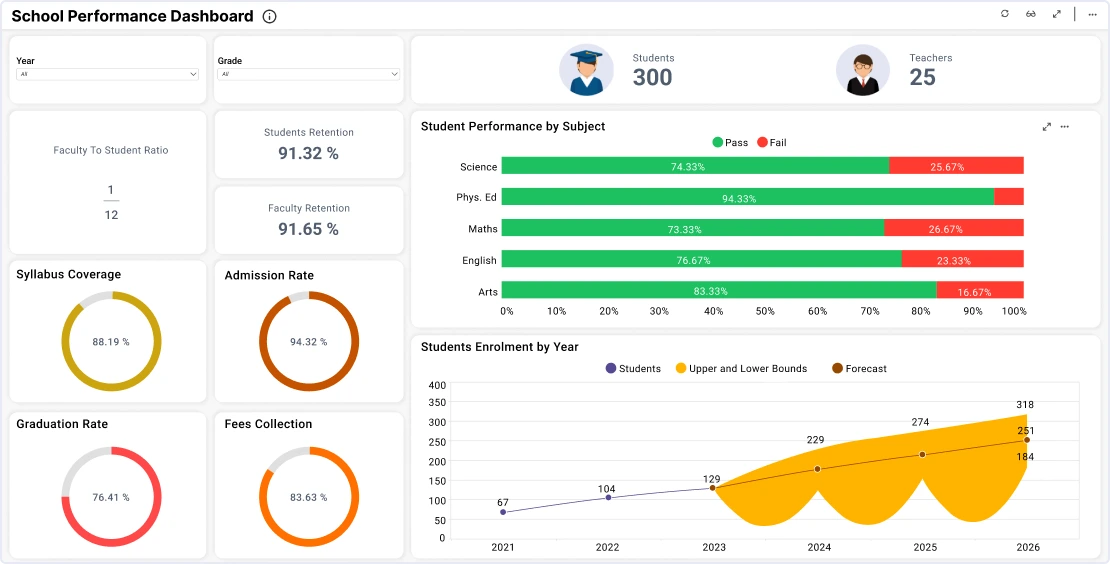Navigating the UCF Mechanical Engineering Flowchart: Transform Complex Academic Pathways into Clear Visual Roadmaps
As someone who's helped countless students decode the UCF ME flowchart, I understand how overwhelming that first look can be. Let me guide you through every connection, prerequisite, and strategic decision point that will shape your engineering journey.
Understanding the UCF ME Flowchart Structure
When I first encountered the UCF Mechanical Engineering flowchart, I felt exactly like many students do - overwhelmed by the maze of boxes, arrows, and course codes. According to the official 2024-2025 flowchart, the program has evolved to include new pathways and requirements that weren't present in previous versions.
Critical Path Visualization
Here's how the critical path courses connect throughout your four-year journey:
flowchart TD
A[MAC 2311C: Calculus I] --> B[MAC 2312: Calculus II]
B --> C[MAC 2313: Calculus III]
B --> D[PHY 2048/L: Physics I]
C --> E[MAP 2302: Differential Equations]
D --> F[PHY 2049/L: Physics II]
F --> G[EGN 3310: Statics]
G --> H[EGN 3321: Dynamics]
H --> I[EGM 3601: Solid Mechanics]
E --> J[EGN 3343: Thermodynamics]
J --> K[EML 3701: Fluid Mechanics I]
K --> L[EML 4142: Heat Transfer I]
I --> M[EML 3500: Machine Components I]
M --> N[EML 4501C: Design I]
N --> O[EML 4502C: Design II]
style A fill:#FF8000,stroke:#333,stroke-width:2px,color:#fff
style O fill:#66BB6A,stroke:#333,stroke-width:2px,color:#fff
I've learned that understanding the prerequisite chains is crucial for successful planning. The flowchart uses specific visual cues that you need to decode:
- Solid arrows indicate direct prerequisites - you must complete the first course before the second
- Dashed lines show co-requisites - courses that can be taken simultaneously
- Critical path courses (highlighted in the official flowchart) form the longest prerequisite chain
- Pending requirements indicate courses that may have additional approval needs

To make sense of this complexity, I recommend creating your own personalized version using flowchart examples that match your specific situation. PageOn.ai's AI Blocks feature lets you build interactive timelines that adapt as your plans change.
Foundation Courses: Building Your Engineering Base
My journey through the foundation courses taught me that strategic planning in your first year sets the tone for your entire degree. Let me share what I've learned about optimizing this crucial phase.
First Year Course Sequencing Strategy
Typical credit load distribution across your first two semesters:
Critical First-Year Sequence
- MAC 2311C (Calculus I): The absolute foundation - I cannot stress enough how this course impacts everything else
- PHY 2048/2048L (Physics I): Requires Calculus I as co-requisite; plan accordingly
- CHS 1440 (Chemistry): Can be taken any semester, but I recommend early completion
- EGS 1006C & EGN 1007C: Light 1-credit intro courses that provide context for your journey
One challenge I see frequently is the programming requirement confusion. You have two options:
| Course Option | Best For | Difficulty | When to Take |
|---|---|---|---|
| COP 3223C (C Programming) | Students with no programming experience | Moderate | Spring of Year 1 |
| COP 2500C (Concepts in CS) | Students with some coding background | Higher | Any semester |

Understanding flowchart symbols becomes essential when you're planning course sequences. I've found that creating visual roadmaps helps identify potential bottlenecks before they become problems.
Core Mechanical Engineering Sequence
The core ME sequence is where your engineering identity truly forms. I've watched students transform from equation-solvers to problem-solvers during these pivotal courses.
Sophomore Year: The Engineering Fundamentals
The interconnected nature of sophomore year courses:
flowchart LR
A[EGN 3310: Statics] --> B[EGN 3321: Dynamics]
B --> C[EML 4225: Vibrations]
A --> D[EGM 3601: Solid Mechanics]
D --> E[EML 3500: Machine Components I]
F[EGN 3343: Thermodynamics] --> G[EML 3701: Fluid Mechanics I]
G --> H[EML 4142: Heat Transfer I]
I[MAP 2302: Diff Equations] -.-> C
I -.-> H
J[EML 3034C: Modeling] --> K[Design Applications]
style A fill:#FF8000,stroke:#333,stroke-width:2px,color:#fff
style F fill:#42A5F5,stroke:#333,stroke-width:2px,color:#fff
style I fill:#66BB6A,stroke:#333,stroke-width:2px,color:#fff
Mechanics Track
Starting with Statics, you'll build understanding of:
- Force equilibrium and free body diagrams
- Dynamic systems and motion analysis
- Material stress and strain relationships
- Machine component design principles
Thermal-Fluids Track
Beginning with Thermodynamics, you'll explore:
- Energy conservation and cycles
- Fluid flow and pressure analysis
- Heat transfer mechanisms
- System efficiency optimization
Junior Year: Advanced Applications
Junior year is where theory meets practice. The EML 3303C (ME Measurements) lab was my first real hands-on engineering experience, and it fundamentally changed how I approach problems.

Key junior year milestones I've identified:
- EML 3701 (Fluid Mechanics I): Where you'll finally understand why airplanes fly and pumps work
- EML 4142 (Heat Transfer I): Critical for energy systems and thermal management
- EML 4225 (Vibrations & Controls): The gateway to robotics and dynamic systems
- EML 3500 (Machine Components I): Real design work begins here
To visualize these complex relationships, I've found that creating MCP component diagrams helps clarify how different course concepts interconnect. PageOn.ai's visualization tools excel at showing these multi-layered relationships.
Advanced Courses and Laboratory Selection
Your choice of advanced courses and laboratory experiences will significantly shape your career trajectory. Let me share insights from my experience and conversations with recent graduates.
Laboratory Selection: A Critical Decision
Student satisfaction and career alignment by lab choice:
My Laboratory Recommendation Framework
Choose Mechanical Systems Lab if you're interested in:
- Robotics and automation
- Manufacturing processes
- Structural analysis and testing
- Mechatronics applications
Choose Energy Systems Lab if you're passionate about:
- Renewable energy systems
- HVAC and thermal management
- Power generation and efficiency
- Environmental engineering
Advanced Course Selection Strategy
You must select 2 of 5 advanced courses. Here's my analysis of each option:
| Course | Career Paths | Difficulty | My Take |
|---|---|---|---|
| EML 3101: Thermo Systems | Energy, HVAC | High | Essential for energy sector |
| EML 4504: Machine Comp. II | Design, Manufacturing | Moderate | Great for product development |
| EML 4703: Fluid Mechanics II | Aerospace, Marine | Very High | Challenging but rewarding |
| EML 4143: Heat Transfer II | Thermal Systems | High | Pairs well with Energy Lab |
| EML 4313: System Dynamics | Controls, Robotics | Moderate | Opens automation doors |

When I was making these decisions, I wished I had access to MCP troubleshooting flowcharts to visualize different pathways. PageOn.ai's Deep Search feature can help you explore how different course combinations align with specific career goals.
Technical Electives and Specialization Paths
Your 15 credit hours of technical electives represent the ultimate opportunity to customize your degree. I've seen students use these strategically to pivot into entirely new industries.
Popular Specialization Tracks
Common specialization pathways and their course combinations:
flowchart TD
A[15 Credit Hours of Technical Electives] --> B[Aerospace Systems]
A --> C[Energy & Thermal]
A --> D[Manufacturing & Robotics]
A --> E[Biomedical Applications]
B --> B1[Aerodynamics]
B --> B2[Propulsion Systems]
B --> B3[Spacecraft Design]
C --> C1[Solar Energy]
C --> C2[Power Plant Engineering]
C --> C3[HVAC Design]
D --> D1[CAD/CAM]
D --> D2[Automation]
D --> D3[Quality Control]
E --> E1[Biomechanics]
E --> E2[Medical Devices]
E --> E3[Biomaterials]
style A fill:#FF8000,stroke:#333,stroke-width:2px,color:#fff
style B fill:#42A5F5,stroke:#333,stroke-width:2px
style C fill:#66BB6A,stroke:#333,stroke-width:2px
style D fill:#FFA726,stroke:#333,stroke-width:2px
style E fill:#AB47BC,stroke:#333,stroke-width:2px
Aerospace Concentration
I've watched colleagues leverage this track to join SpaceX and Blue Origin:
- EAS 4134: High-Speed Aerodynamics
- EAS 4200: Flight Mechanics
- EML 5131: Combustion
- EAS 4505: Orbital Mechanics
- EML 4304: Gas Turbines
Energy Systems Focus
Perfect for the renewable energy revolution:
- EML 4600: HVAC System Design
- EML 5105: Solar Energy Systems
- EML 4411: Power Plant Engineering
- ENV 4341: Energy Resources
- EML 5152: Thermal Management
Strategic Elective Timing
Optimal semester distribution for technical electives:
My recommendation: Wait until junior spring to start electives. This gives you time to:
- Discover your interests through core courses
- Network with professors in specialized areas
- Attend career fairs to understand industry needs
- Complete internships that clarify your direction

To visualize your elective strategy, I recommend using AI-powered flowchart tools that can map prerequisites and suggest optimal sequences. PageOn.ai's AI capabilities can analyze course descriptions and help identify synergies between electives.
Capstone Design Experience
The senior design sequence (EML 4501C and 4502C) represents the culmination of your engineering education. I still remember the excitement and terror of my first client meeting!
The Two-Semester Journey
Design I (Fall): Concept Development
- Form teams of 4-6 students with complementary skills
- Select from industry-sponsored or faculty-proposed projects
- Conduct extensive research and feasibility studies
- Create preliminary designs and prototypes
- Present conceptual design review to sponsors
Design II (Spring): Implementation
- Refine designs based on feedback
- Build and test functional prototypes
- Perform detailed analysis and optimization
- Document everything professionally
- Present at the Engineering Showcase
Recent Project Categories
Distribution of senior design projects by category (2023-2024):
Key success factors I've observed in winning projects:
- Clear problem definition: Projects that solve real, specific problems stand out
- Strong documentation: Professional reports and presentations make a huge difference
- Iterative testing: Teams that prototype early and often produce better results
- Industry engagement: Regular sponsor communication leads to relevant solutions
- Visual communication: Teams using professional diagrams and renderings excel

For presenting your design work effectively, PageOn.ai's Vibe Creation feature transforms technical documentation into compelling visual narratives. I've seen teams use it to create stunning presentations that clearly communicate complex engineering concepts to non-technical stakeholders.
Supporting Requirements and Academic Success
Beyond the core engineering courses, several supporting requirements form the foundation of your technical education. I've learned these aren't just boxes to check—they're essential tools you'll use throughout your career.
Mathematics and Science Foundation
STA 3032: Statistics
Critical for quality control, reliability analysis, and experimental design. I use these concepts daily in failure analysis.
EGN 3365: Materials
Understanding material properties is essential for any design work. This course connects chemistry to real applications.
EGN 3373: Electrical Principles
Even mechanical engineers need electrical knowledge. Crucial for mechatronics and control systems.
Advising Milestones: Your Academic Checkpoints
The advising process ensures you stay on track:
flowchart LR
A[Freshman Year] --> B[Complete Foundation]
B --> C[EML 3933: Advising I]
C --> D[Junior Year Progress Check]
D --> E[Technical Elective Planning]
E --> F[EML 4931: Advising II]
F --> G[Graduation Audit]
G --> H[Degree Completion]
style C fill:#FF8000,stroke:#333,stroke-width:2px,color:#fff
style F fill:#66BB6A,stroke:#333,stroke-width:2px,color:#fff
Critical GPA Requirements
- Maintain 2.0 overall GPA minimum (but aim much higher!)
- 2.25 GPA required in all engineering courses
- C or better in all prerequisite courses
- Limited grade forgiveness attempts - use wisely
- Consider summer courses to improve GPA if needed

Transform complex prerequisite chains into clear visual guides using PageOn.ai's Agentic capabilities. I've found that visualizing these requirements helps identify the most efficient path through the program, especially when planning summer courses or dealing with scheduling conflicts.
Strategic Planning for Transfer Students and Major Changes
If you're joining the ME program after starting elsewhere—whether from another major or institution—I understand the unique challenges you face. Let me share strategies that have helped others successfully navigate this transition.
Common Transfer Scenarios
Typical time to graduation by entry point:
Critical Transfer Considerations
Common Pitfalls to Avoid
- Missing prerequisites: Physics II is often overlooked but blocks many courses
- Course equivalency issues: Not all "Statics" courses are equal—verify with advisors
- Lab sequence timing: Some labs are only offered once per year
- GPA reset concerns: Transfer GPA doesn't carry over—establish strong UCF GPA early
- Financial aid limits: Excess hours can impact Bright Futures eligibility
Accelerated Pathway Strategies
I've helped several transfer students graduate on time using these approaches:
| Strategy | Time Saved | Considerations |
|---|---|---|
| Summer courses (2 per summer) | 1 semester | Expensive but effective |
| 18-credit semesters | 1-2 semesters | Requires strong time management |
| CLEP/AP credit maximization | 1 semester | Limited to gen-ed courses |
| Transient student courses | Varies | Requires prior approval |

For students changing majors within UCF, here's my recommended catch-up sequence:
- Immediate priorities: Complete Calc sequence and Physics I/II ASAP
- Summer focus: Take Chemistry and programming requirements
- Fall entry: Begin Statics and Thermodynamics together
- Advising partnership: Meet with CECS advisors monthly initially
- Peer connections: Join ASME or SAE for study groups and mentorship
Building personalized transition roadmaps is essential for success. I've found that visual planning tools help identify bottlenecks before they become problems. PageOn.ai's comprehensive visualization capabilities can transform your unique situation into a clear, actionable plan that adapts as circumstances change.
Transform Your Academic Journey with PageOn.ai
After navigating the complexities of the UCF ME flowchart myself, I know how valuable clear visual representations can be. PageOn.ai empowers you to create stunning, interactive flowcharts, academic roadmaps, and project visualizations that turn confusion into clarity. Whether you're planning your course sequence, documenting your capstone project, or explaining complex engineering concepts, PageOn.ai's AI-powered tools help you communicate with impact and precision.
Start Creating with PageOn.ai TodayYou Might Also Like
The Art of White Space: Enhancing E-Learning Clarity and Engagement
Discover how strategic use of white space in e-learning design improves clarity, reduces cognitive load, and enhances learner engagement. Practical techniques for effective layout design.
Revolutionizing Slides: The Power of AI Presentation Tools | PageOn.ai
Discover how AI presentation tools are transforming slide creation, saving hours of work while enhancing design quality. Learn how PageOn.ai can help visualize your ideas instantly.
Perfecting Slide Flow: Adjusting Transition Speeds for Professional Presentations
Master the art of slide transition speeds for professional presentations. Learn optimal timing techniques, avoid common pitfalls, and create engaging presentation flow that captivates your audience.
Creating Powerful Quiz-Based Presentations with ClassPoint | Interactive Learning Guide
Learn how to build engaging quiz-based presentations using ClassPoint's PowerPoint add-in. Discover 8 interactive question types, AI quiz generation, and student engagement strategies.